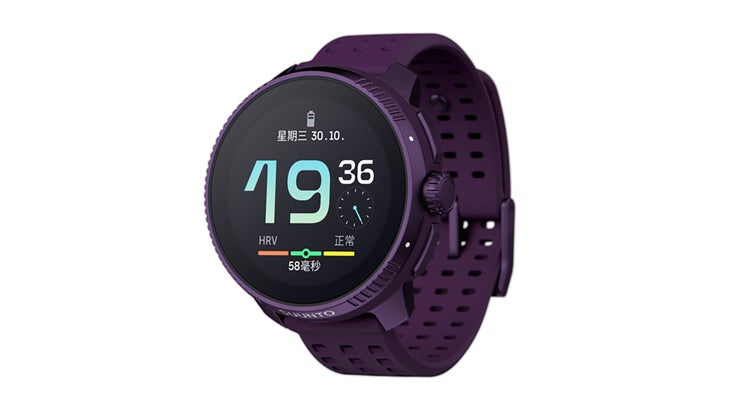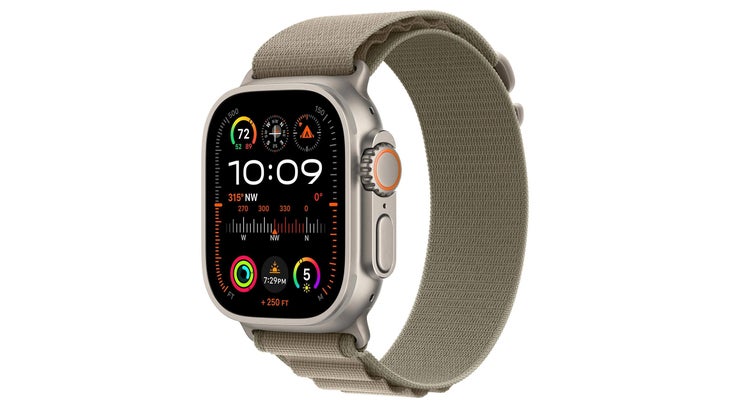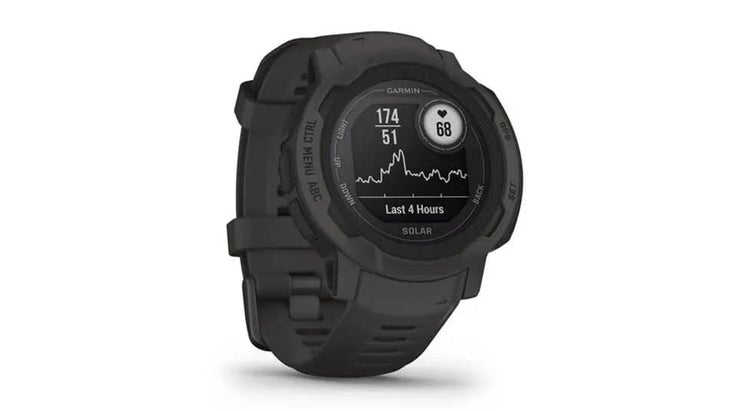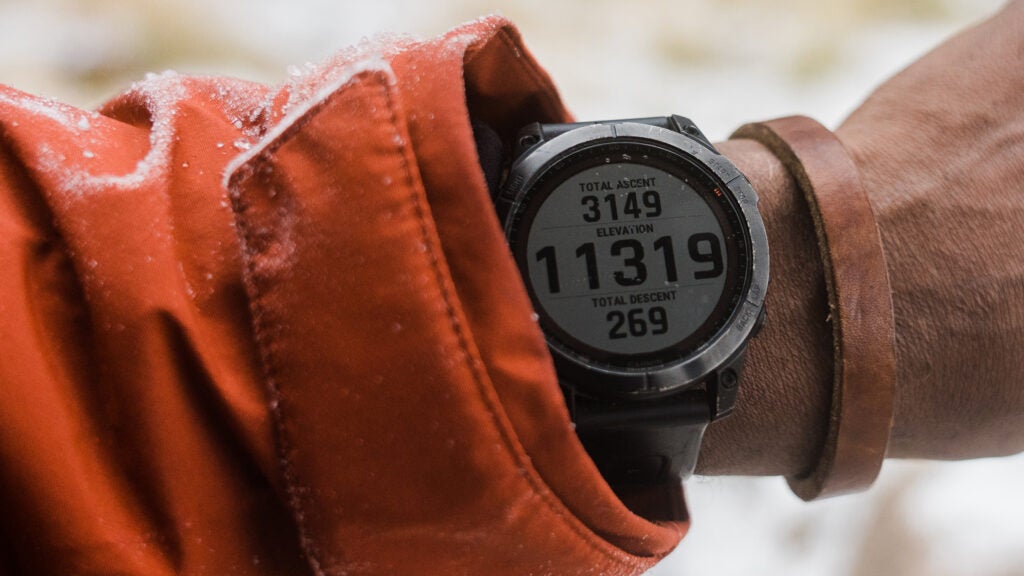The best watch testers are picky and obsessive. Like you, they’re people who don’t suffer fools, who just want to get on with their workout, and don’t have time for a watch that doesn’t perform. To find the right people for this year’s test we recruited a group of dedicated runners, a special forces veteran, and some overly busy dads who we knew would drill down and quickly find the highest-performing options.
Updated August 2024: We’ve updated the formatting of this guide and updated the retailers and pricing of our picks.
At a Glance
If you buy through our links, we may earn an affiliate commission. This supports our mission to get more people active and outside. Learn more.
Best Value
Coros Pace 3
$229 at REI $229 at Backcountry
Weight: 1.1 ounces (nylon band); 1.3 ounces (silicon band)
Pros and Cons
⊕ Affordable
⊕ Easy to read
⊕ Motivating stats
⊗ Limited workout tracking menu
Dollar for dollar, this was the best watch we tested. It wasn’t the most feature-rich, but it costs a fraction of the price of other high-end sports watches and still performed at an extremely high level, even when on the wrist of our most discerning tester, Meghan Healy. She used it for hundreds of hours—running, backpacking, stretching— and said it quickly became an incredible training partner. She loved the smaller form factor (she’s just five feet tall) that felt light and easy to wear, said the graphed presentation of the running stats helped her quickly identify areas for improvement, and was wildly impressed with easy-to-read screen and battery life.
“I worried at one point because I forgot to charge the watch before heading out on a two-night backpacking trip,” she says. “But the watch tracked all of my hiking…and I still got home with plenty of power left.” (Coros says the Pace 3 gets you 38 hours of GPS use and 24 days of daily use). Healy’s only niggle was that the watch doesn’t have the most robust workout menu—she needed, but didn’t have, horse riding, yoga, and martial arts, which some other watches on the market offer. But for everyday use and most workouts, there’s no better value on the market.

Best for Multi-Sport Athletes
Suunto Race
$449 at REI $449 at Backcountry
Weight: 2.9 ounces
Pros and Cons
⊕ Beautiful screen
⊕ Robust workout tracking menu
⊗ Sleep tracking is glitchy
The color screen on the Race reminds us of the Apple Watch Ultra 2 because it’s as bright and sharp, thanks to the high-definition Amoled screen. It was a pleasure to look at even during our grumpiest moments on the trail. Multi-sport tester Meghan Healy also said she loved the wide-ranging workout menu that allowed her to track everything from running and yoga to horseback riding and capoeira.
She has small wrists and was initially turned off by the large 1.43-inch display, but eventually came to love it because all that real estate had space to deliver lots of useful information and made following a map on the screen a breeze. The battery was stellar, with up to 40 hours of accurate GPS tracking and 26 days of daily use. Made from stainless steel (or titanium for another $100) and covered with a sapphire crystal face, the Race will put up with years of abuse, making it an incredible value at under $500.
One ding: Healy said she thinks the sleep tracking needs improvement—the data said she was awake during times when she knew she was asleep—and it was tricky to get the watch to wake up sometimes. But those are small downsides for a tool she says quickly became a necessary part of her daily routine.

Best for Everyday Use
Apple Watch Ultra 2
$799 at Apple $799 at Best Buy
Weight: 2.2 ounces
Pros and Cons
⊕ The best interface on the market
⊕ Intuitive lifestyle functions
⊗ Lousy battery life
Category manager Jakob Schiller is not as hardcore an athlete as the other testers in this year’s group and found that the Ultra 2 was perfect for weekend warrior like him. He loved how the watch integrated into his everyday life, allowing him to quickly answer texts with Siri, easily control his AirPods, and answer a call on the watch just by double-tapping his pointer finger and thumb. But he was also impressed with the bright screen, detailed stats for everything from skiing to swimming, and the well-designed watch faces that presented data and info in smart, easy-to-read displays. “The watch faces that launched with the Ultra 2 are not only a pleasure to look at but are also damn good at presenting both everyday and workout information—plus they’re easily customizable,” he said.
This year’s version is also carbon-neutral, and Apple says it’s going to share the environmentally-friendly manufacturing technology it developed to help other companies build better products. Jakob, like everyone else, was disappointed, however, with the 36-hour battery life (with regular use, up to 72 hours in low power mode), but says he’s rarely away from a charger for that long, so it isn’t a deal-breaker.

Best for People Who Are Rough on Their Gear
Garmin Instinct 2x Solar
$450 at REI $450 at Backcountry
Weight: 2.4 ounces
Pros and Cons
⊕ Indestructible
⊕ Incredible battery life
⊗ Black and white screen
Our tester group all agreed that the Fenix 7X Solar Pro is the best watch Garmin makes when it comes to top-end features. But we’re including the brand’s Instinct 2x Solar on this list instead because it’s significantly less expensive yet still delivers the most important features we want in an adventure watch and excels in durability. Tester Zachary Klein is an instructor for elite search and rescue troops—so he’s regularly out exercising or adventuring with the most bad-ass people on the planet—and says the Instinct 2x Solar kept up with every activity and handled every type of abuse. Klein beat the shit out of the watch, that’s rated to military standards for temperature, shock, and water resistance, and said it barely blinked.
Like all Garmin watches it has class-leading battery life—60 hours of GPS use and 40 days of normal use—and those stats stretch on even longer with solar charging. The exercise menu is deep, the built-in flashlight is handy, the GPS is accurate and quick to connect, and the watch is also a great daily assistant when paired with your phone. The black and white screen is not as pretty to look at and doesn’t present as much detailed information as you get with Fenix models, but it still gave us the most important info and was easy to read in full sunlight.
How to Choose a Sports Watch
When buying a sports watch you need to decide who you really are. That sounds like some kind of spiritual question you’d ponder at a retreat, but it’s absolutely the best way to sort out what you need. Can you admit to yourself that you’re a weekend warrior because you have a job and family? Or are you totally in and going to the top as an athlete? Maybe you disappear into the backcountry for a week whenever you get the chance.
It’s necessary to categorize yourself because this will help you pick the watch that meets your goals. If your workouts are squeezed into lunch-hour work breaks, you don’t need a watch that will last for weeks on end without charging. If you’re dedicated to really improving in your chosen sport, a higher-end watch with complex training options can be a real aid in achieving your goal. If you dabble in a variety of sports, you’ll need a watch with a robust workout menu. And if you’re an adventurer who regularly returns from trips with torn apparel and broken equipment, you need to prioritize a bullet-proof build.
Next, make sure you play with the watch you think you want—at a local retailer, if possible, or borrow one from a friend—before making a purchase. Spend time pressing buttons, and see how much effort it takes to find features and customize the watch to your preferences. All the top-end sports watches have menus that are fairly well organized, but each one is different. Little tweaks in how a watch allows you to access a workout or track data can be big motivators—or frustrations—when you’re using the thing all day every day. Note: the menus used across a specific watch brand’s line tend to be similar, so even if you don’t find the exact model you want at your local retailer, you can still get a sense of how a brand organizes its software by playing with a different watch.
How We Test
- Number of testers: 6
- Number of products tested: 11
- Number of miles: 1,200
- Most fun use of a sports watch: watching our heart rate jump every time we cycled by an alligator in Florida
- Favorite workout artist: Meute
This year our workout watches traveled the country. One tester used hers while running, cycling, and kayaking in Florida’s Everglades National Park while another relied on her watch for an ultra-marathon that traversed the mountainous ridges outside Silverton, Colorado. The watches also tracked our steps and incoming texts during our varied day jobs that included teacher, pulmonologist, data analyst, fish biologist, and marketing director. All testers were encouraged to be highly critical of their samples—they dove deep into software design and were asked to be tough on the body of the watch to assess build quality—and were only allowed to recommend a watch that eventually found its way into their daily routine and became a trusted training partner.
Meet Our Lead Testers
Category manager Jakob Schiller was a gear editor at Outside and is now a columnist. The father of four kids and two dogs, he’s a bit pinned down but still manages to run, ski, or bike every day and loves a good weekend-long adventure in the woods chasing elk, peak tops, or fresh turns.
Lead tester Meghan Healy does data management for the publishing industry and is also one of New Mexico’s most high-energy athletes. She runs races, is passionate about martial arts, rides horses, cycles around town with her kids, helps coach soccer, and is the true definition of someone who benefits from a trusted, function-rich sports watch.

